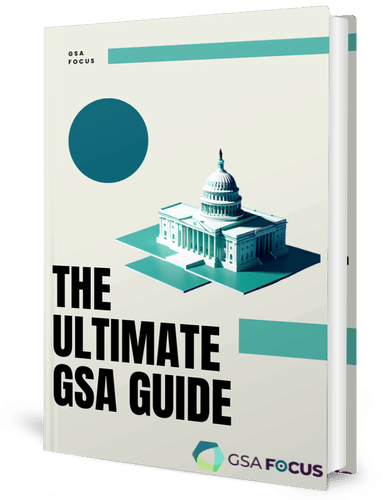There are two options for GSA Contractors that drastically effect their Terms and Conditions. I am talking about Transactional Data Reporting (GSA TDR) vs. Price Reductions Clause (PRC). Here are brief definitions and how the clauses work:
Price Reductions Clause
Table of Contents
ToggleGoing back decades, the Price Reductions Clause (PRC) allows the GSA to determine a “Basis of Award” (BOA) customer, often called “Most Favored Customer” (MFC). This BOA or MFC is the that which GSA Pricing and discounting are based on. So, if you have several customer types, the GSA will typically select the one that is the closest match to the GSA as a customer. Often times, this is “All Commercial Customers.”
If and When a GSA Contractor offers a higher discount to their BOA, then the GSA’s Price Reductions Clause is triggered and the GSA is then supposed to receive a discount according to that offered to the BOA Customer + the negotiated GSA Discount. For example:
GSA Negotiated discounts: GSA received 3% discount from “All Commercial Customers” who receive a 0% discount.
If GSA Contractor sells to a Commercial Customer with a 2% discount, then this triggers the PRC, and the new GSA Discount is to be bumped up to 5% (the 3% originally offered to GSA + the 2% that the BOA was given). This can apply even if it was just a one-time discount offered.
This has been a very problematic clause for GSA Contractors for as long as it has been around. Many believe that the GSA should not have the ability to reach into Commercial Practices, that this is not a fair business practice because it limits a companies ability to be competitive in the commercial market.
Transactional Data Reporting
In recent years (June 2016), the GSA began offering an alternative to the Price Reductions Clause, called Transactional Data Reporting or TDR. This allows a GSA Contractor to opt-out of the Price Reductions Clause if they are willing to report their monthly/quarterly sales transactionally. So, all transactional information must be entered, with several details for each transaction (contract number, quantity, item price, part number, etc.). Those under the PRC only have to enter the total GSA sales for that period.
Transactional Data Reporting is offered under a group of Special Item Numbers (SINs), not all. Here is the list:
| Schedule | Description | SINs | Offerings |
|---|---|---|---|
| 58 I | Professional Audio/Video | All | Products |
| 72 | Furnishings & Floor Coverings | All | Products |
| 03FAC | Facilities Maintenance & Management | All | Services |
| 51V | Hardware Superstore | All | Products |
| 75 | Office Products/Supplies | All | Products |
| 73 | Food Service, Hospitality, Cleaning Equipment | All | Products |
| 70 | Information Technology | 517410 (132-54, 132-55) | Satellite Services |
| 511210( 132-32, 132-33) 54151 (132-34) | Software | ||
| 33411 (132-8) | Hardware | ||
| 00CORP | Professional Services Schedule (PSS) | Professional Engineering Services SINs | Services |
According to the GSA’s website, The Key Objectives of TDR are to:
- Support category management & promote smarter buying
- Save money and pass on savings to the taxpayer
- Reduce contractor and contracting officer burden
- Increase transparency into federal acquisition
- Be a proactive federal partner to give our customers the information they need
- Lower barriers for businesses entering the market, which is especially important for our small business partners
GSA TDR Fact Sheet (pdf)
Federal Times Article (8/19/19): GSA extends a pilot to save the government millions
Benefits of Participating in the Pilot:
Under the pilot, you will not be required to provide Commercial Sales Practice (CSP) disclosures which identify discounts, terms, and conditions you offer to your commercial customers. Additionally, the burdensome requirement to monitor price reduction violations through Price Reduction tracking is removed. Thus, participation in the TDR pilot results in a substantial decrease in the paperwork burden for vendors submitting new offers under the Schedules included in the TDR Pilot.
Purpose of the Pilot:
Prior to the TDR pilot, when vendors first submitted an FSS offer, minimal consideration was given to the relative competitiveness of the vendor’s prices to other vendors (i.e., horizontal pricing).Instead, the FSS program primarily collected aggregate sales information through Commercial Sales Practices (CSP) disclosures, which included a broad disclosure of discounts vendors offer to commercial customers for similar products and services. Contractors were then required, under the Price Reductions clause (PRC), to monitor their pricing over the life of the contract and provide the government with the same price reductions that they give to the class of the contractor’s commercial customers upon which the original contract award was predicated.
Transactional data provides the business intelligence used to inform smarter buying strategies. It provides the government insight into its purchasing patterns, allowing it to craft smarter demand management strategies and identify the most efficient solutions, channels, and sources to meet mission-critical needs. Armed with this intelligence, the government can leverage its buying power to achieve taxpayer savings as it concentrates its purchases through fewer channels, which will in turn provide lower administrative costs for federal contractors.
It is very important to note that participation in the transactional data pilot does not transform the federal acquisition system into a lowest-price procurement model. The Federal Acquisition Regulation (FAR) has a stated vision “to deliver on a timely basis the best value product or service to the customer, while maintaining the public’s trust and fulfilling public policy objectives.” The government’s preference will continue to be “best value,” or as defined in the FAR, “the expected outcome of an acquisition that, in the government’s estimation, provides the greatest overall benefit in response to the requirement.” Transactional data is viewed in the context of each procurement, taking into account desired terms and conditions, performance levels, past customer satisfaction, and other relevant information. Using and understanding the data will help inform requirements definition and reduce excess consumption.
Participation in the Pilot:
Vendors electing to participate in the TDR pilot will electronically report the data elements noted below for each order placed against their Schedule contract.
Reports will be due thirty (30) days after the end of the preceding month.
- Contract Number or BPA Number
- Order Number or Procurement Instrument Identifier (PIID)
- Manufacturer Part Number
- Unit of Measure (each, hour, case, lot, etc.)
- Quantity of Item Sold
- Universal Product Code (UPC) if applicable
- Price Paid per Unit
- Total Price Sold
- Non Federal Entity, if applicable
- Description of Deliverable
- Manufacturer Name
- SIN †# (mandatory for Services)
†# Reporting SIN(s) is required for contractors with services and for contractors who have not successfully uploaded their approved pricelist into GSA Advantage! via the Formatted Product Tool (FPT) if FPT is applicable to your schedule. Vendors will be notified of Services SIN applicability under separate cover
Reporting instructions will be provided along with your contract award documents.
For vendors opting to participate in TDR, accumulation of data will begin with the effective date of the contract and the first report will be required 30 days after the end of the month in which the contract became effective (it will most likely be only a partial report). Monthly reporting will be required going forward and will always be due 30 days after the end of the prior month. The Industrial Funding Fee (IFF) is due 30 days after the end of each standard business quarter (March 31st, June 30th, September 30th, and December 31st.) Vendors may also elect to remit their IFF each month when their transactional data reporting is completed.
The implementation of Transactional Data Reporting represents another forward-thinking improvement to the Schedules Program which will provide benefits to vendors, federal agencies and, most importantly, the taxpayer.


